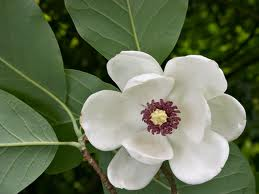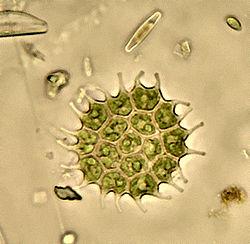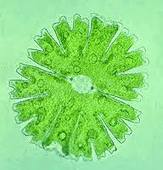
Number of species in the collection: 2698.
Phyla:
Anthocerotophyta (Hornworts)
Bryophyta (Mosses)
Charophyta (Stoneworts, Charophycean algae)
Chlorophyta (Typical green algae)
Lycopodiophyta (Clubmosses, spikemosses, quillworts and relatives)
Marchantiophyta (Liverworts)
Monilophyta (Ferns, horsetails and relatives)
Rhodophyta (Red algae)
Spermatophyta (Seed-producing plants)
Zygnematophyta (conjugated algae, fresh-water algae withouth flagela)
Pictures of Plantae:










Characteristics of Plantae:
The plant kingdom is one of the most well-known
kingdoms, largely due to its omnipresence in any terrestrial environment. Its
maximum diversity is found in tropical environments, but plants also inhabit
deserts, poles, freshwater and saltwater environments, and even some live inside
animals behaving as parasites. They seem to be only absent in the deep sea or
polar ice caps.
The plants group ranges from some microscopic unicellular algae to large trees.
Most of their biological diversity, contrary to what one might think, is found
in algae, with terrestrial plants simply considered as a group of algae adapted
to land. Throughout their evolutionary history, there's a clear trend from
mobile unicellular states to multicellular and immobile ones, followed by
cellular specialization of works, and finally, with the transition from water to
land, the formation of complex body structures, such as the vascular system or
flowers.
Plants have very diverse life cycles, involving several generations to complete
the cycle. In the lineage that ends up forming terrestrial plants, there's a
clear trend from a cycle with a single haploid generation (one copy of each
chromosome), to a cycle with two generations dominated by the haploid
individual, then to one dominated by the diploid individuals (two copies of each
chromosome), and finally to a cycle with one generation dominated by the diploid
individual. For much of plant history, they were formed by algae of limited
complexity. In the Silurian period (starting 443 million years ago), a small
lineage of algae began to adapt to terrestrial life, giving rise to an
incredible number of species with highly varied morphologies in a relatively
short period of time. These early terrestrial plants had very limited size due
to their impossibility in transporting water to all their tissues, but over
time, a vascular system was perfected, allowing the development of tree-like
forms in groups of plants that are now extinct. With the next geological periods,
plants further perfected their adaptation to terrestrial life, giving rise to
new groups until flowering plants originated in the Jurassic period. Coevolution
between new groups of insects and flowering plants, along with the great
adaptive advantages of these plants, has led to flowering plants being the
dominant plant group today, with great importance in the ecology of global
ecosystems.
The initial organism that ended up forming the plant lineage was not
photosynthetic, but rather a unicellular organism that had to ingest food to
survive. This primitive organism fed, among other things, on a group of bacteria
called Cyanobacteria, the only organisms at
that time capable of photosynthesis by breaking down water molecules and
releasing oxygen, just like plants do today. There was a close symbiosis
relationship between the primitive organism and the photosynthetic bacteria
until a moment came when the host, after ingesting a cyanobacterium, did not
digest it, so it remained alive inside its cell. With evolution, this
relationship of one organism inside another was perfected, giving rise to a
photosynthetic eukaryotic organism. In this way, plants originated from the
fusion of a eukaryotic organism with a photosynthetic bacterium, which has been
reduced to form a structure called a plastid. Plants, like any eukaryote,
breathe oxygen, releasing carbon dioxide, but they have metabolic pathways that,
with the energy of light, are capable of transforming water and carbon dioxide
into sugars, from which they build all the molecules necessary to form their
bodies.
Kingdom: Plantae